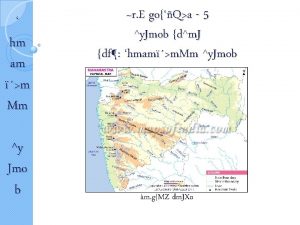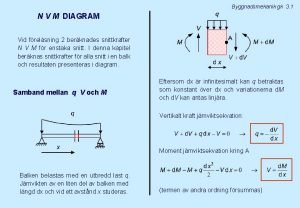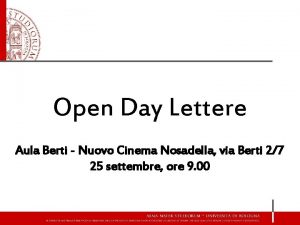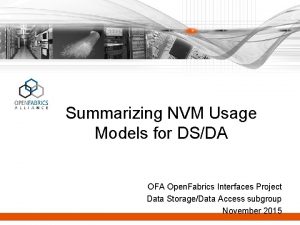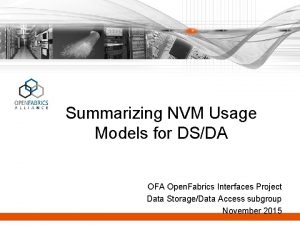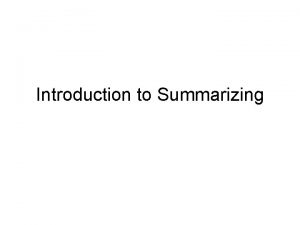Summarizing NVM Usage Models for DSDA OFA Open







- Slides: 7

Summarizing NVM Usage Models for DS/DA OFA Open. Fabrics Interfaces Project Data Storage/Data Access subgroup November 2015

Objective of this slide deck is to dig down into these two 2

Motivation – NVM is an important emerging technology of great importance to OFA members and the consumers of OFS – It is sufficiently unlike existing memory models to warrant a discussion of an API to access it – It will have a significant enough impact on how storage is architected, deployed, and accessed to warrant a discussion of NVM for I/O, and an API to access it – Both ‘Data Storage’ and ‘Data Access’ are therefore potentially impacted by the emergence of NVM • Hence, the initial look at NVM is being taken by the DS/DA subgroup • A broader discussion with the main OFI WG is anticipated 3

Scope • NVM as a target of I/O operations – out of scope: NVM as a target of memory L/S ops • Accessed either locally or remotely • As a local device – attached to the I/O bus (e. g. SSD) or – attached to a memory channel • As a remote device – attached to a network device www. openfabrics. org 4

NVM access methods summarized Case Access method note 1 local memory access via memory load/store ops 2 local byte accessed as I/O 3 local block access general case of byte access 4 remote byte access 5 remote block access (1) (2) (1) Case 1 is almost certainly out of scope for DS/DA but is included here for completeness (2) Block level access, where the target is described by an address and extent, is seen as the general case of byte-addressable memory, where the extent is as small as 1 byte. www. openfabrics. org 5

Case 1, 2, 3 – local access models I/O – byte-addressable or block N V memory N V D I M M block access* via e. g. NVMe M C fs D I M M N V D I M M SSD *f/s storage today is block storage, but in the future it may be some other access paradigm, e. g. byte level, object I/O www. openfabrics. org 6

Case 4, 5 – remote NVM I/O access Consumers (clients) of NVM I/O include e. g. - user or kernel file or object storage (Lustre, CEPH…) - block storage consumers (i. SER, SRP, NVMef…) shared remote N access I/O device N V V client CPU N V CPU D I M M NIC D I M M SSD SSD I/O device exports a byte-addressable or block level I/O interface www. openfabrics. org 7

